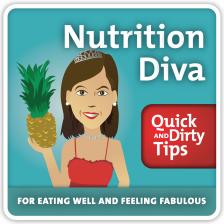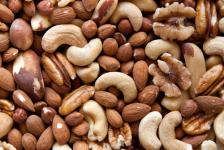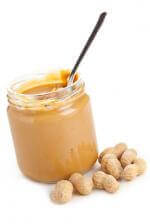Nutrient Density vs. Energy Density
What’s the difference between a nutrient-dense food and an energy-dense food? Nutrition Diva explains.

Here’s what you need to know about nutrient and energy density and how to choose the right foods for your goals.
What Is Nutrient Density?
Nutrient density refers to how much nutrition a food provides per calorie. If a food is high in nutrients but low in calories, we say it is nutrient dense. But obviously, terms like “high in nutrients” or “low in calories” are relative. Nutrient density is most useful as a way to compare two foods. If a food provides more nutrition for the same amount of calories (or the same nutrition for fewer calories), it is more nutrient dense than the other food.
A glass of orange juice has about same number of calories as a glass of soda, for example, but the juice contains more nutrients. Therefore, the juice is more nutrient dense than the soda. But a glass of tomato juice has about the same nutritional value as the glass of orange juice for about half the calories, making tomato juice more nutrient dense than orange juice.
How Do We Measure Nutrient Density?
Comparing the nutrient density of foods can get a little tricky. One food might have lots of vitamin C while another might be high in folic acid. Can we say that one is more nutritious than the other? Not really.
A handful of systems have been devised for measuring nutrient density. NuVal is one system you may have heard of; it’s been adopted by a lot of large grocery chains. I recently developed a measure of nutrient density called the ReViVer Score, which was designed to evaluate and compare restaurant entrees. Author Joel Fuhrman proposed something called the Aggregate Nutrition Density Index, which is geared more toward whole foods, such as fruits, vegetables, and dairy products.
Most nutrient density scores take into account a broad range of nutrients and adjust the scores so that a food that is reasonably high in a variety of nutrients ranks higher than a food that’s very high in just one or two. Some systems also subtract points if a food is high in undesirable elements such as sodium, sugar, or saturated fat.
Although the different systems have their strengths and weaknesses, the goal is to help you choose foods that deliver more nutrition for the calorie. These systems work best when used to compare similar items, such as various breakfast cereals. They are not as helpful if you’re trying to compare dissimilar items like a soup and a dried fruit, for example.
Choose Nutrient Dense Foods for Optimal Nutrition

And if you’re restricting your calorie intake, it’s even more important to choose nutrient-dense foods.
What Is Energy Density?
Energy density, on the other hand, describes how many calories a food has relative to its size or weight. A cup of grapes has about 100 calories and a cup of raisins has about 400 calories. So we say that raisins are more energy dense than grapes. A tablespoon of butter has about 100 calories while a tablespoon of light cream cheese has only 30 calories, so butter is more energy dense than the cream cheese.
As a rule, foods that are higher in water and/or lower in fat have a lower energy density than foods that are lower in water and/or higher in fat. By choosing foods with low energy density, such as fresh fruits and vegetables or reduced fat dairy products, you’ll get a bigger serving for fewer calories. If you’re trying to lose weight, these foods can help you cut calories without feeling hungry.
See also: 3 Tips on How to Eat Less Without Feeling Hungry
In other situations, however, foods with high-energy density may be exactly what you’re looking for. Athletes, hikers, and astronauts might want foods that deliver the maximum number of calories in the smallest possible package. If you’re struggling to gain weight, energy-dense foods such as dried fruit, nuts and avocados can help you increase your calorie intake without over-filling your stomach.
Energy Density Has Nothing to Do with Nutritional Value
Finally, it’s important to remember that energy density doesn’t take the nutritional value into account at all. A tablespoon of peanut butter has about 100 calories while a tablespoon of jelly has only 50. Peanut butter is a lot more energy dense than jelly – but also a lot more nutrient dense. Even if you’re trying to cut calories, I think you’d be better off choosing the peanut butter and finding another place to save 50 calories.
Because nutrient density takes both nutrition and energy (or calories) into account, it’s probably a better guide for overall nutrition. Understanding energy density can also be useful if you’re trying to minimize or maximize your caloric intake.

Be sure you’re subscribed to get weekly tips and advice for eating healthy and feeling fabulous!
Connect with Nutrition Diva on Instagram, Twitter, and Facebook,




